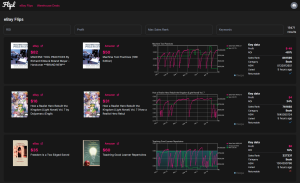Cross-border e-commerce is seeing remarkable growth. The market is anticipated to flourish even further and reach $1736.44 billion by 2031.
What’s contributing to the market’s growth? Evolving consumer preferences and demand for product variety is one of the key market drivers. It’s no wonder that more and more companies are embarking on cross-border sales.
Take Apple, for instance. It sells its products worldwide. At the same time, it takes advantage of cost efficiencies abroad and has manufacturing units in China, Brazil, and India.
Alongside these opportunities, however, come challenges; cross-border payments are a big one.
Businesses often face delays in receiving payments. Research has found that businesses in the U.S. wait for 33 days, on average, to receive payments. Meanwhile, those in the U.K. have to wait for 30 days.
Thankfully, innovations in payment technology are transforming how money moves across borders. Here, we’ll discuss some innovations that are making cross-border payments faster and cheaper.
#1 Real-Time Payment Networks
If you’ve ever Venmo-ed for coffee or paid bills instantly through a banking app, you’re already familiar with real-time payment (RTP) networks.
These networks allow for seamless domestic payments in real time. Now, they are reaching new milestones across the U.S. and beyond, informs PYMNTS.com.
RTPs are gaining traction in cross-border e-commerce, which is quickly expanding across Europe. Banks in European countries, Electronic Payments International notes, can capitalize on the booming e-commerce market, better support international merchants, and boost customer satisfaction.
These systems allow instant fund transfers between countries, no matter the time zone.
Unlike traditional wire transfers that take days and charge hefty fees, these networks allow you to send money in seconds while keeping costs low. You can also track payments in real time and get them settled much faster than before.
RTPs, Deloitte notes, will drive business growth, provide access to new markets, and add more transparency to the otherwise fragmented and unpredictable B2B payments landscape.
#2 Merchant of Record Services
If you’re a business owner operating across borders, you know that selling internationally is quite a challenge.
You have to navigate tax regulations, manage foreign exchange rates and ensure compliance with local laws. That is a lot to juggle. Working with a merchant of record (MoR) can reduce your burden to half.
Joining forces with an MoR, PayPro Global explains, will simplify the multi-currency payment process, which will enhance efficiency and cost-effectiveness. That is to say, you will enjoy financial flexibility and efficiency, simplified compliance management, and improved payment authorization in different currencies.
But how do MoR providers simplify the complexity of cross-border payments for businesses? They leverage existing payment infrastructure to ensure seamless transactions across multiple markets. This means your customers get a seamless, local-feeling checkout experience while you avoid the headache of setting up payment systems in every country.
This payment infrastructure is common among businesses that sell software, SaaS, and video games. However, PhocusWire reveals that a growing number of travel agencies are also adopting it.
#3 Distributed Ledger Technology
Few tools in financial history have been as important as the all-powerful ledger, states PYMNT.com.
Throughout history, it has been a critical enabler of cross-border payments, evolving from handwritten records during the Age of Discovery to today’s digital distributed systems.
A distributed ledger, the Bank for International Settlements describes, is a database consensually shared and synchronized over networks and distributed across multiple sites, institutions, or geographies. Thus, there are multiple witnesses—public or private—to transactions.
Blockchain, the most famous type of distributed ledger technology (DLT), is shaking up cross-border payments. When you send money internationally through traditional systems, banks, and intermediaries, take time to verify the transactions. DLT, however, validates and records each transfer almost instantly.
The benefits are huge. Transactions are faster, more transparent, and way more secure. Since the ledger is decentralized, hacking it is next to impossible—it would require altering records on every node simultaneously. Plus, DLT lowers costs by cutting out extra fees for intermediaries.
#4 Central Bank Digital Currencies
Payment networks around the world have limited interconnectivity.
Central bankers and other policymakers around the world are redefining money by creating digital national currencies known as central bank digital currencies (CBDCs), however.
This digital national currency, according to the Cato Institute, is directly liable to the central bank of a country.
More than 100 central banks worldwide are exploring CBDCs to rethink their existing legacy payment systems and build a secure and resilient infrastructure. These countries are not just exploring CBCDs for retail, but also prioritizing cross-border and wholesale CBDCs. That can be bank-to-bank transfers across countries.
Aside from near-instant, low-cost transfers directly between countries, CBCDs can increase financial inclusion. Many people worldwide lack access to traditional banking but have smartphones. CBDCs could give them a direct way to participate in the economy.
Cross-border payments have come a long way from the days of wire transfers and sky-high fees.
Thanks to these innovations, they are speeding up cross-border payments. Not only that, but they are creating a world where money can move freely, securely, and without unnecessary costs.
Of course, no system is perfect yet. Challenges like regulatory hurdles, interoperability between systems, and equitable access still need work. But the progress made so far is nothing short of remarkable.
As these innovations mature, cross-border payments could truly transform how businesses, families, and entire economies connect.








